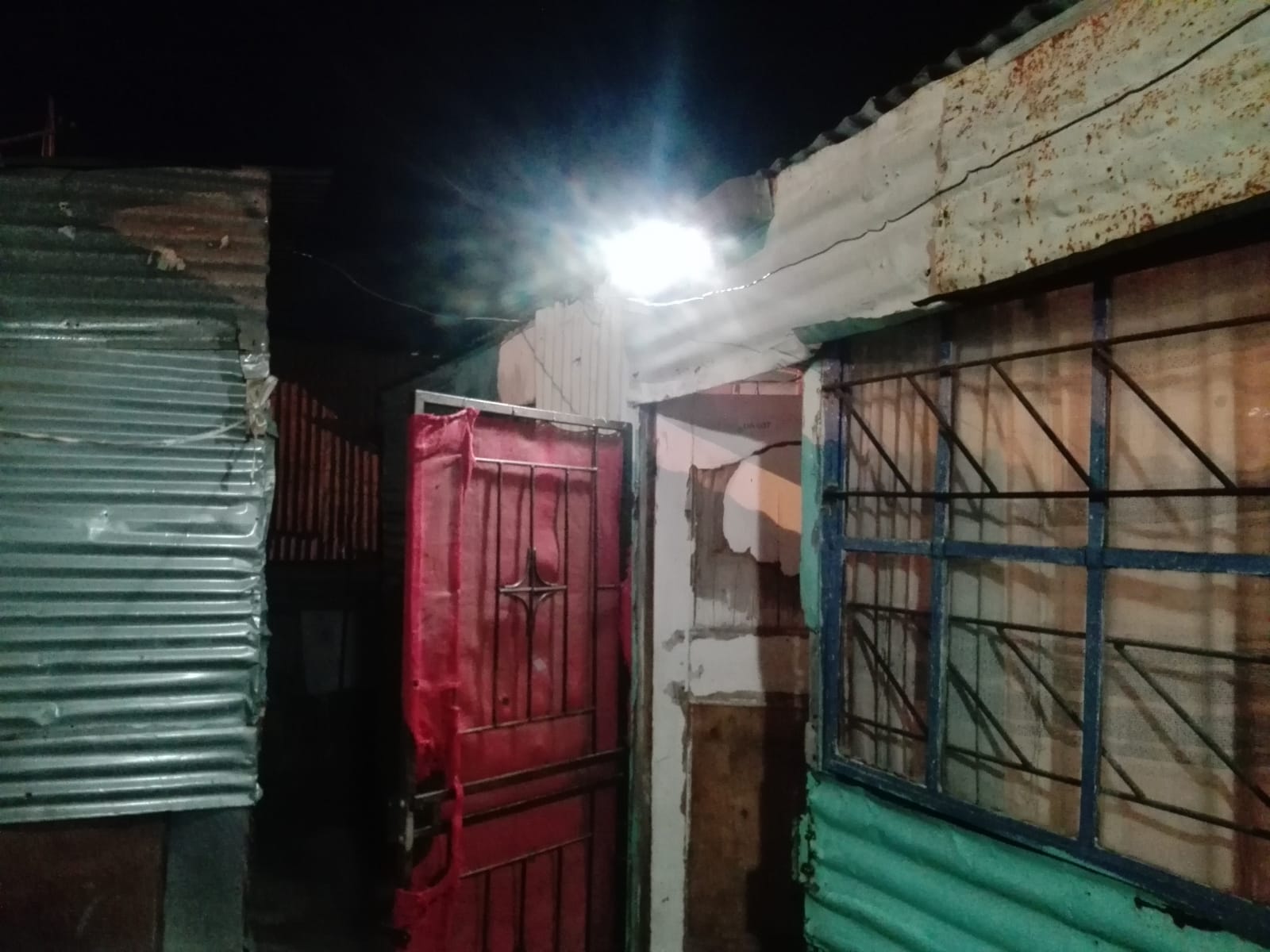Solar Public Lights: An Alternative Solution for Informal Settlements
A recent project by ETH researchers, together with partners from South Africa, has examined the impact of improved public lighting on the life of residents of informal settlements in Cape Town. Wall-mounted solar public lights may be an effective and sustainable alternative to the high-mast lighting currently in use.
Worldwide external page more than one billion people live in informal cities with shelters often built from found or inexpensive materials. Many of these self-built communities lack access to basic services such as sanitation, running water, or electricity.
One issue that has received little attention in research and policy is the provision of adequate street lighting in informal settlements, even though lighting plays an important role in enabling people to feel safe outside at night or in the early morning hours and in accessing shared basic services, such as toilets or water taps.
In South Africa’s second largest city, Cape Town, about external page 14 percent of the population lives in informal settlements, many of which are lit at night by high-mast lights – tall floodlights like those found in soccer stadiums. Athough these lights are commonly used in informal settlements and some residential areas that were zoned as Black African during apartheid, researchers (Borofsky 2022, external page Kretzer 2020), residents (external page Lali 2019), and NGOs such as the external page Social Justice Coalition alike argue that high-mast lights do not provide adequate public lighting. This is because they provide uneven light and cast deep shadows.
More light, a greater sense of safety
An alternative, more effective, and sustainable solution for public lighting could be solar public lights mounted directly onto residents’ homes. As part of an ETH4D Research Challenge, Yael Borofsky and Prof. Isabel Günther from the ETH Development Economics Group (DEC), in collaboration with Stephanie Briers from DARCH and partners from South Africa, installed these solar lights in an informal settlement in Cape Town. The DEC researchers conducted an impact evaluation with about 800 households to investigate how the use of solar lights affects nighttime life, particularly nighttime outdoor activities, and perceptions of safety.
They found that pedestrian paths illuminated with solar lights were more than six times brighter than unlit paths. The study also showed that the lights made people feel safer at night. However, it did not find that people participated in more activities at night nor did they find an effect on the crimes residents reported. One interesting finding is that residents in both treatment and control groups reported using shared sanitation facilities more often at night — an indication that the benefit of the lights might have had a positive effect on both the treatment and the control groups (Borofsky 2022).

The collaboration with partners from South Africa proved to be essential during the implementation of the project, especially during the pandemic. With the support of the local leadership and residents along with Keyaam DuToit, a solar lighting engineer and owner of Majru Investments, who assisted the project with the installation and maintenance of the lights, the study continued without major delays despite the lockdown.
Ultimately, the project suggests that solar public lights could be a solution for other informal neighborhoods in Cape Town, as well as in other informal settlements in South Africa and worldwide. The project partners have also presented the findings to representatives from the City of Cape Town’s government, who are interested in ways to introduce solar public lighting to other informal settlements. They are also currently working together with the leadership committee and residents of the informal settlement to develop a fault reporting and maintenance system so that the lights continue to provide light in the neighborhood for a long time to come.
The impact evaluation was part of a field experiment that was conducted in collaboration with Stephanie Briers of DARCH while both students were at the ETH Institute for Science, Technology, and Policy. The idea for the wall-mounted solar public lights was developed as part of Briers’ doctoral work.